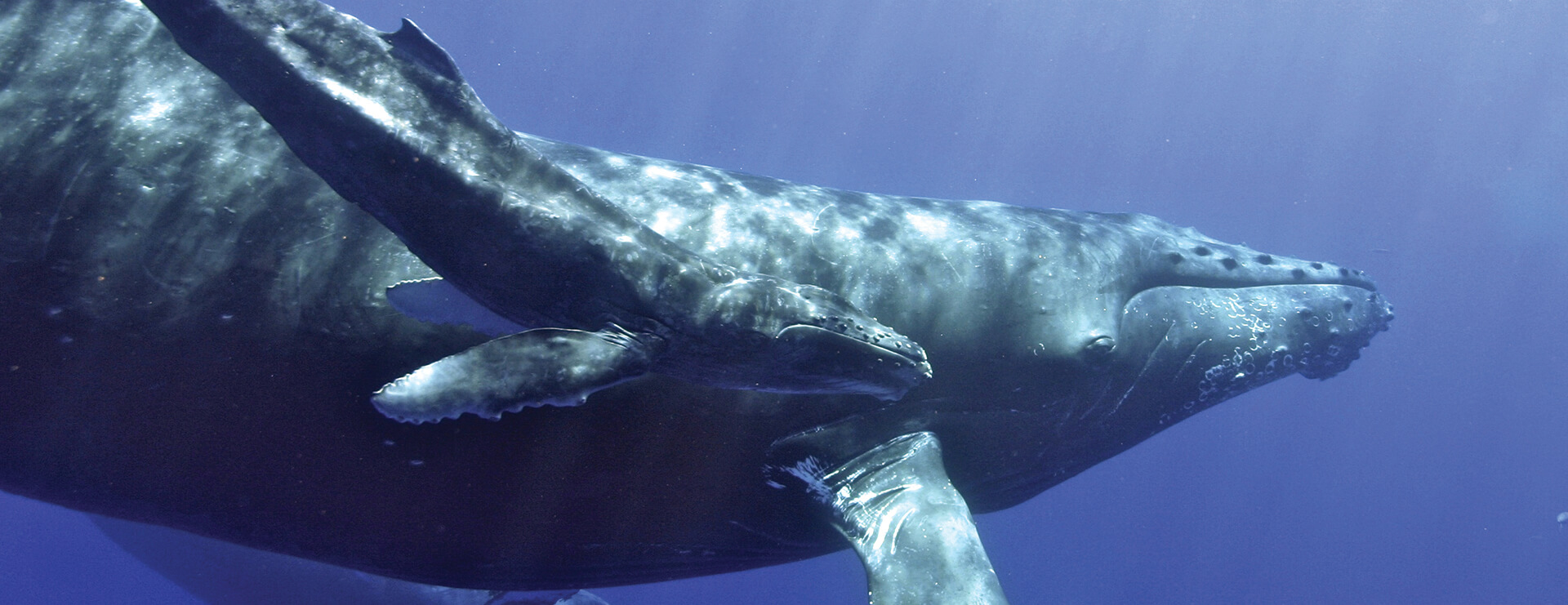Hawaiian Islands Humpback Whale National Marine Sanctuary

Location: Main Hawaiian Islands
Size: 1,366 square miles
Designated: 1992
Habitat: Shallow waters, coral reefs, seagrass beds
Visit Website



Photos (clockwise from top left): Cindy Among-Serrao/NOAA; NOAA, under NOAA Permit #782-1438; NOAA, under NOAA MMHSRP Permit #932-1489; Cindy Among-Serrao/NOAA;
The humpback whale is one of the most spectacular ocean creatures in the world. At 45 feet long and weighing 40 tons, these whales are surprisingly acrobatic, and can be spotted throughout the National Marine Sanctuary System. Every winter, thousands of humpback whales travel to the warm, shallow waters of Hawai‘i to mate, give birth, and raise their young. There, Hawaiian Islands Humpback Whale National Marine Sanctuary protects them and their habitat.
The sanctuary encompasses five separate marine protected areas accessible from six of the eight main Hawaiian Islands. These areas support more than half of the North Pacific humpback whale population. From December to March, visitors to the sanctuary can see whales from shore and at sea.
Collaboration is key to success in Hawaiian Islands Humpback Whale National Marine Sanctuary. Researchers from the sanctuary work closely with institutions and universities to better understand the whales and how to best manage their habitat. Each year, volunteers participate in the Sanctuary Ocean Count, a citizen science program designed to help track the number of whales visiting Hawai‘i. The sanctuary collaborates with local communities, recognizing the importance of Native Hawaiian cultural traditions and their relationship to the long-term health of the ocean.


